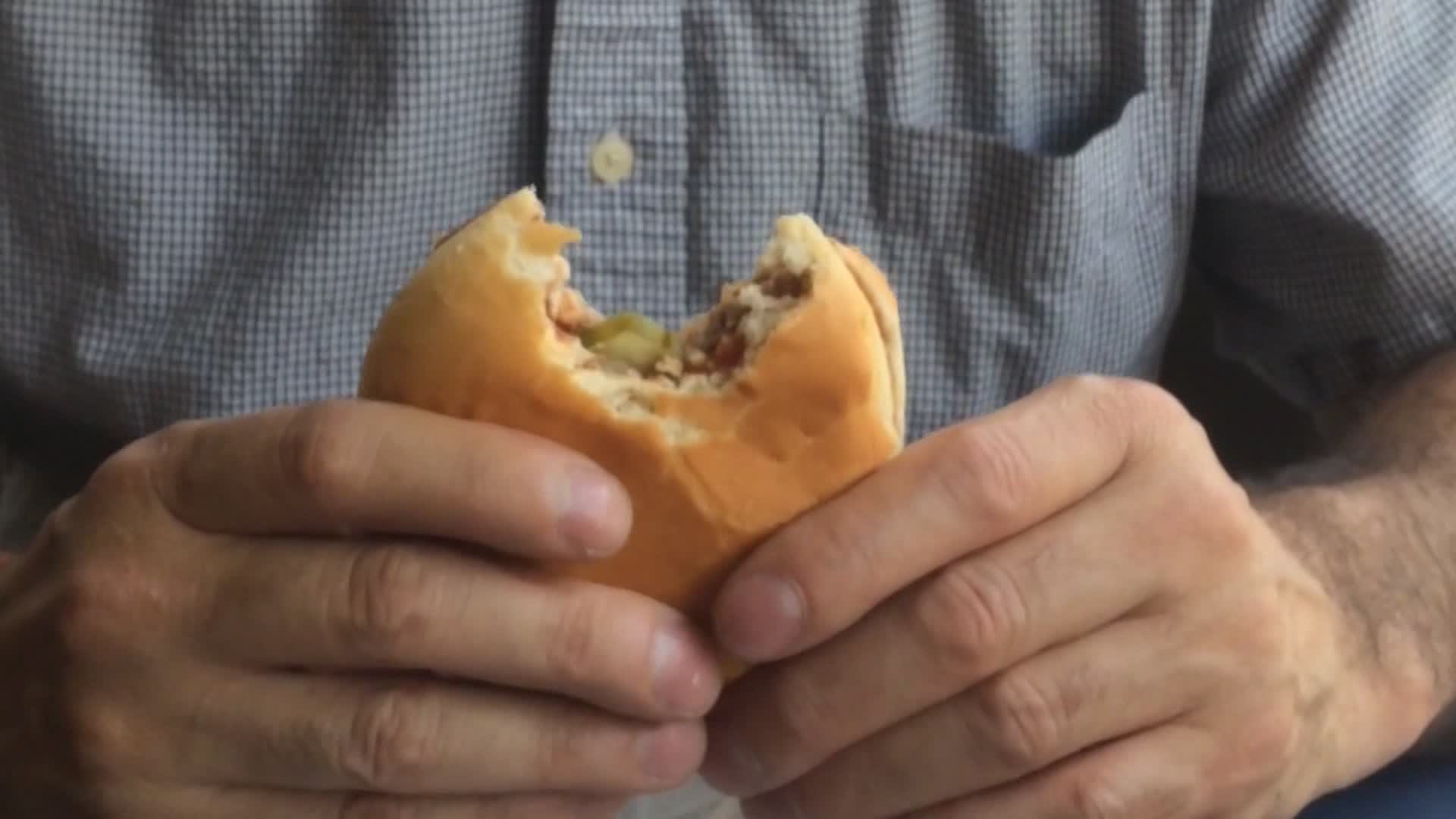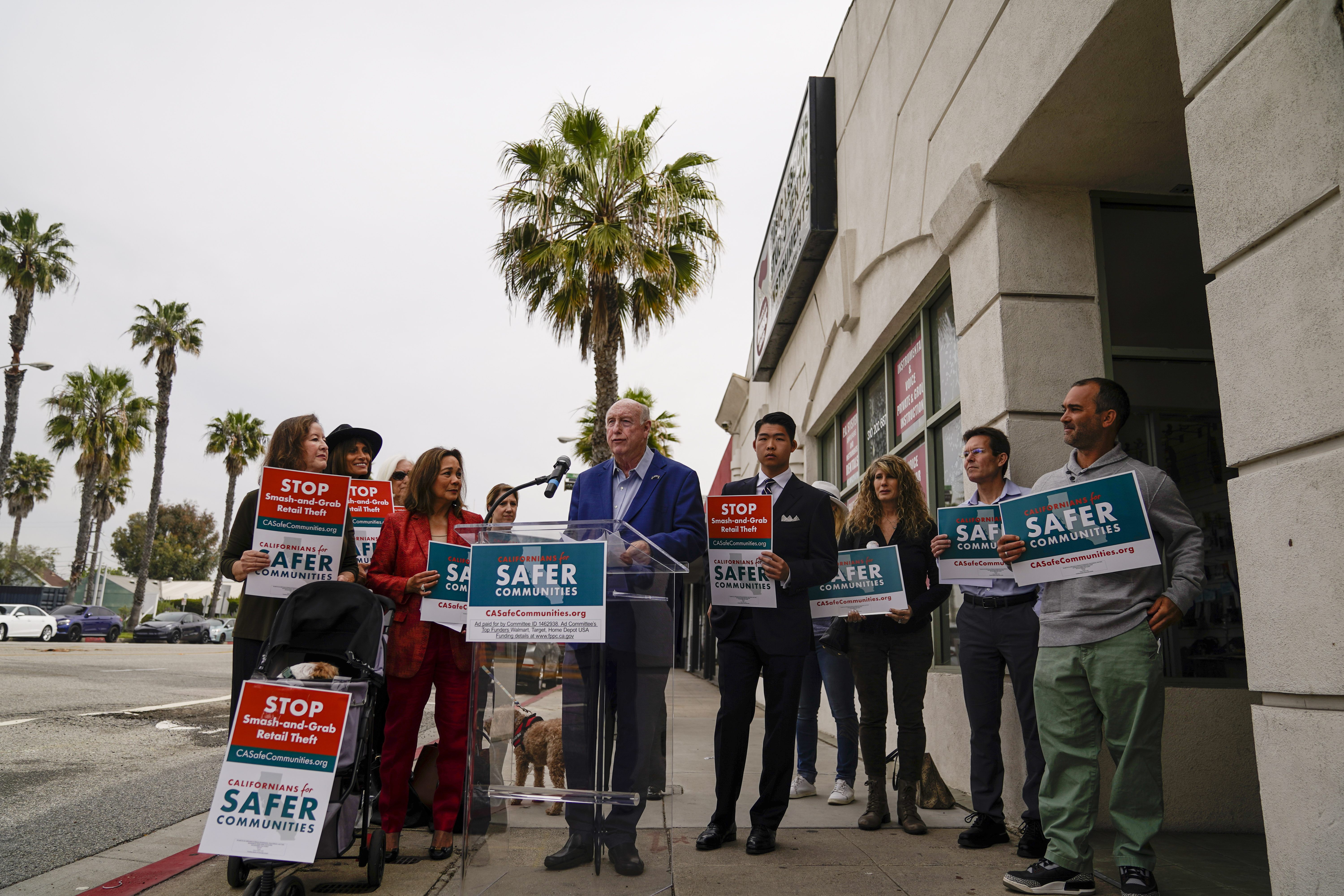Despite record rain and snow, California's drought emergency has not ended for thousands of people in four rural counties.
In the agriculture-rich San Joaquin Valley, many residents with dried up wells must still use water delivered to large tanks in their yards to wash dishes and bathe.
It's one of the few alternatives that remain.
Scientists at Stanford University and NASA say excessive pumping of wells during the drought has permanently tapped out some underground sources of water that will never recover. Officials say nearly 2,400 wells dried up at the height of five-year drought, affecting 12,000 people.
David Miguel, who lives in a rural neighborhood surrounded by orchards, is waiting for a state grant to connect his home to a community well after his own went dry. The retired farm hand relies on water deliveries and laughs when he hears that Gov. Jerry Brown recently declared the drought was over for most of California.
Miguel has a large, black emergency water tank located just steps from the front door of his mobile home.
"You can take a bath with it, do dishes -- no problem," said Miguel, who was raised on his family's long-gone dairy operation in Hardwick. "I wouldn't drink it."
California
News from across California
The water delivery truck tops it off every few weeks. Miguel and his neighbor survive on the trucked-in water and deliveries of bottled drinking water. They live in the last two Hardwick homes awaiting a state grant to hook into a reliable water main.
Miguel doesn't know when his home will get connected to the new 470-foot (143-meter) community well outside the county fire station, but he anticipates a $50 monthly water bill -- more than it costs to run his own well.
Miguel laughed when asked what he thinks about Brown's recent declaration that the drought is over for most of California.
"Oh, is that so?" he joked.
Susan Atkins of the charity Self-Help Enterprises told The Asociated Press earlier this month that the drought is not over for more than 900 families who have large water tanks in their yards because their wells dried up during the years long drought. Most of them are in Tulare County, a farming powerhouse in central California's San Joaquin Valley.
Atkins said she still receives calls from people whose wells are running dry and need a tank and bottled water. Those calls for help have slowed significantly since the height of the dry spell, but Atkins said people still are looking for help to get emergency water tanks and navigate government bureaucracy.
"But they're still coming in," she said about the calls.
Emergency water tanks for residents have cost the state nearly $28 million since 2014, with more than half in Tulare County.
In Hardwick, which has no sidewalks or streetlights, residents said their wells began drying up after farmers on three sides of the community dug deep wells to irrigate their orchards during the drought, when water from rivers and canals was scarce. Resident Alvin Lea said his 120-foot (37-meter) well that was drilled in the 1960s dried up, costing him $17,000 for a new one that was more than 100 feet (30.48 meters) deeper.
Lea, 77, a retired mechanic, keeps his swimming pool full for his great grandchildren to play in during scorching summer days. He raises 200 exotic birds, which also need to drink, he said, tipping back the brim of his hat to peer at them through a wire mesh enclosure.
Randy Herman, a long-distance trucker with a family, said it's obvious to him that his community is a long way from rebounding from drought. After his well ran dry, he connected to a large water tank before finally hooking up to the community well. Not all of his neighbors are so fortunate, he said.
"You got tanks, you got water bottles," Herman said. "I don't think the drought's over. It's going to take a long time."
In parts of the San Joaquin Valley, underground aquifers -- layers of earth saturated by water -- collapsed from over-pumping during years of dry weather, according to scientists at Stanford and NASA who studied satellite imagery to measure sinking land. They said layers of clay soil have compacted, permanently reducing natural aquifer storage capacity.
Brown's announcement ended a 2014 emergency declaration during the state's driest four-year period on record. It led to the first conservation rules for the nation's most populated and agriculturally productive state, focused on turning off sprinklers and ripping out thirsty lawns.
Under the declaration issued April 7, the State Water Resources Control Board will continue reporting requirements for urban water use, noting that the severe dry spell will impact California for years in some areas -- especially those with diminshed groundwater basins. Dry conditions also limited farm production and killed an estimated 100 million trees.
The drought emergency was lifted after winter unleased powerful storms that drenched California and left its critical Sierra Nevada Mountains snowpack at historic levels. An index of precipitation at eight measurement stations showed just under 90 inches of rain and snow have fallen this winter in the northern Sierra Nevada. The previous record of 88.5 inches was set in the winter of 1982-1983.
That water melts in spring and flows into California's system of aqueducts and reservoirs, providing water for about 23 million people.
The storms also caused flooding and an estimated $1 billion in damage to roads and other infrastructure.
NBC4's Jonathan Lloyd contributed to this report.



